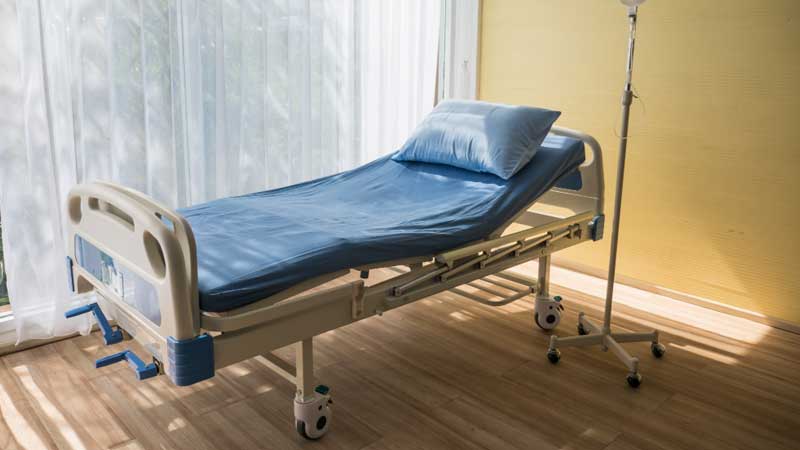Choosing the right hospital bed for home care is a critical decision for patients and caregivers. It ensures comfort, safety, and proper medical support for individuals with varying health needs. This guide will walk you through the essential considerations, types, features, and expert insights to help you make an informed choice.
Ensure comfort & safety at home! Choosing the right hospital bed can make all the difference for patients & caregivers. Explore options tailored to unique health needs.
Rent a Cure Services Tweet
Understanding the Benefits of Hospital Bed Rentals
Definition and Importance
A hospital bed for home care is a specially designed bed that caters to the needs of patients requiring medical attention at home. These beds provide a range of features that enhance patient comfort, facilitate medical procedures, and ensure safety. The importance of choosing the right hospital bed cannot be overstated, as it significantly impacts the patient’s quality of life and recovery process.
Who Needs a Hospital Bed for Home Care?
Hospital beds for home care are essential for individuals with chronic illnesses, those recovering from surgery, elderly patients with mobility issues, and anyone requiring prolonged bed rest. They are also beneficial for caregivers, making it easier to assist patients with daily activities and medical needs.
2. Types of Hospital Beds
Manual Hospital Beds
Manual hospital beds are operated using hand cranks. They are cost-effective and ideal for patients who do not require frequent adjustments. However, they may require more physical effort from caregivers.
Semi-Electric Hospital Beds
Semi-electric beds combine manual and electric functions. They allow for electric adjustments of the head and foot sections, while the height adjustment is manual. These beds offer a balance between functionality and cost.
Fully Electric Hospital Beds
Fully electric beds provide the highest level of convenience, with electric controls for adjusting the head, foot, and height of the bed. They are suitable for patients with severe mobility issues and for caregivers who need to make frequent adjustments.
Bariatric Hospital Beds
Designed for overweight and obese patients, bariatric beds offer enhanced support and wider dimensions. They are built with stronger materials to accommodate higher weight capacities.
Low Hospital Beds
Low beds are closer to the floor, reducing the risk of injury from falls. They are ideal for patients with a high risk of falling out of bed.
Trendelenburg Hospital Beds
These beds allow for advanced positioning options, such as the Trendelenburg and reverse Trendelenburg positions, which can aid in certain medical treatments and improve circulation.
3. Key Features to Consider
Bed Frame Material
The material of the bed frame affects its durability and weight capacity. Common materials include steel, aluminium, and reinforced plastic.
Adjustable Height
Adjustable height is crucial for both patient comfort and caregiver convenience. It allows for easier transfers and access to medical treatments.
Side Rails
Side rails provide safety by preventing falls. Some beds offer adjustable or removable rails to suit different needs.
Mattress Options
The type of mattress used can significantly impact patient comfort and pressure sore prevention. Options include innerspring, foam, air, and alternating pressure mattresses.
Bed Controls
User-friendly bed controls are essential for patients and caregivers to make adjustments easily. Some beds offer remote controls or built-in panels for convenience.
4. Mattress Types for Hospital Beds
Innerspring Mattresses
Innerspring mattresses provide traditional support with coil springs. They are durable and offer a firm sleeping surface.
Foam Mattresses
Foam mattresses contour to the body, providing pressure relief and comfort. They are ideal for patients at risk of developing pressure sores.
Air Mattresses
Air mattresses allow for adjustable firmness levels and can help in pressure sore prevention by redistributing pressure points.
Alternating Pressure Mattresses
These mattresses periodically change pressure points by inflating and deflating air cells. They are highly effective in preventing and treating pressure ulcers.
6. Benefits of Using a Hospital Bed at Home
Enhanced Comfort and Support
Hospital beds are designed to provide optimal support and comfort, accommodating various positions and adjustments.
Improved Mobility and Independence
Adjustable beds can help patients move more easily, promoting independence and reducing the risk of bedsores.
Better Sleep Quality
Customized positioning and specialized mattresses contribute to better sleep quality and overall well-being.
Safety Features
Hospital beds come with various safety features, such as side rails and emergency backup systems, to ensure patient safety.
7. Common Challenges and Solutions
Cost Management
Explore options like insurance coverage, rental programs, and financing plans to manage costs effectively.
Space Limitations
Measure the room space accurately and choose a bed that fits without overcrowding the room.
Adjusting to the New Bed
Provide ample time for the patient to get accustomed to the new bed and make necessary adjustments for comfort.
Maintenance and Care
Regular maintenance is essential for the longevity of the bed. Follow manufacturer guidelines for cleaning and upkeep.
8. Expert Insights from Medical Professionals
Medical professionals emphasize the importance of quality equipment for home care. Renting from reputable providers such as Rentacure Services ensures that the hospital bed meets medical standards. These beds are designed to support various medical conditions, offering features like height adjustment, remote control, and specialized mattresses for pressure relief.
Advice from Caregivers
Caregivers recommend home hospital beds for a reason! They’ve found that the adjustable features make transfers and daily tasks much easier on the back. These beds also allow for position changes to prevent pressure sores and improve comfort for the patient. They recommend investing in quality, washable bedding and keeping the environment clutter-free to ensure cleanliness and safety.

